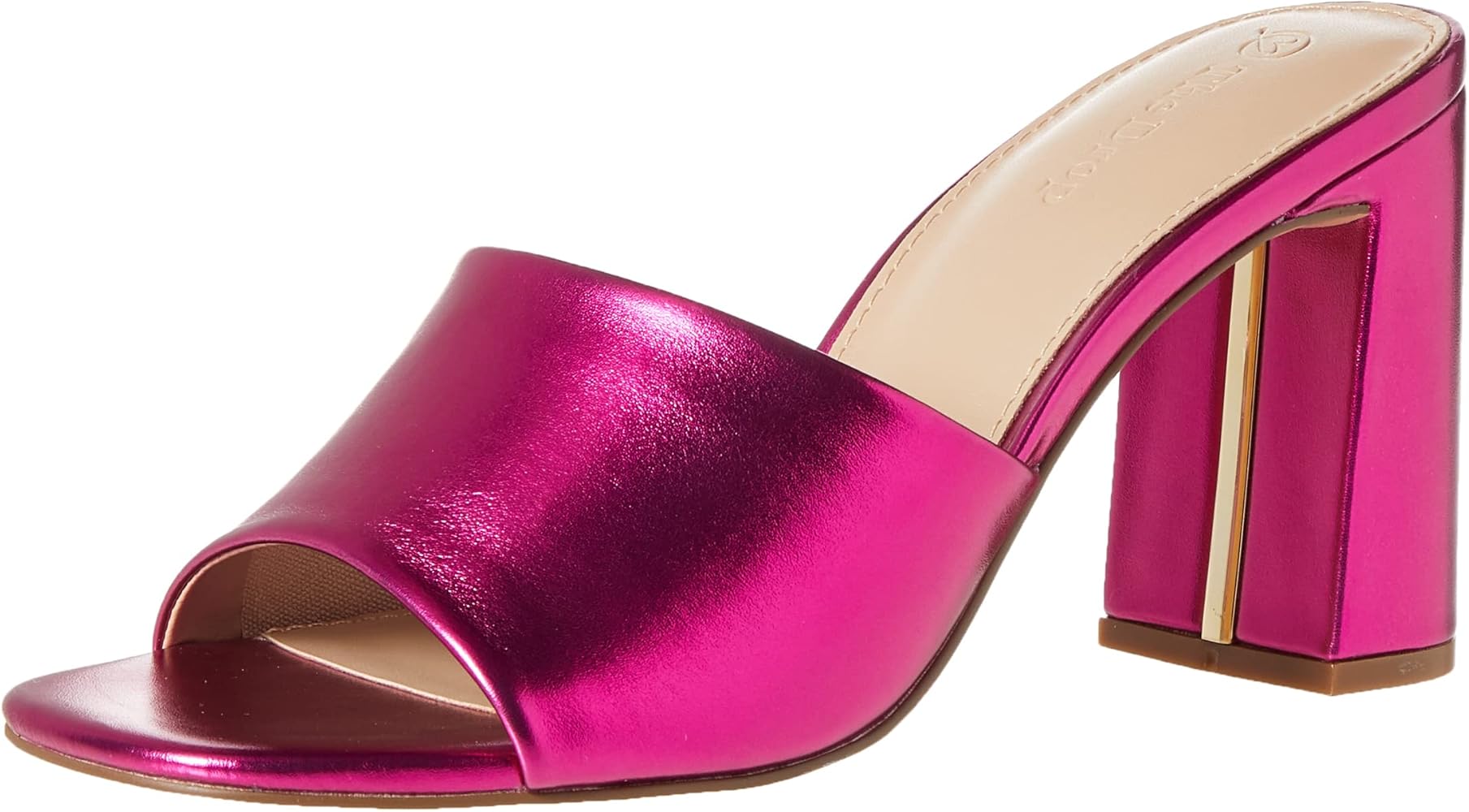Shoes have heels to provide elevation, style, and support. Heel drop refers to the difference in height between the heel and the forefoot, impacting comfort and performance.
Heels have been a staple in footwear for centuries, combining function and fashion. They enhance posture, create an elongated silhouette, and often signify status. Heel drop plays a crucial role in how shoes perform. A higher drop can promote a heel-first landing, while a lower drop encourages a more natural foot position.
Athletes often choose shoes based on heel drop to optimize their running style. Understanding these elements helps consumers select the right footwear for their needs. Whether for daily wear or athletic pursuits, the design of heels and heel drop significantly influences comfort and performance.
The Origins Of Heeled Shoes
Heeled shoes have a rich history. They were not always about fashion. Early designs served various practical purposes. Understanding their origins reveals much about human culture.
Early Uses And Purposes
The first heeled shoes appeared in the 10th century. They were mainly for horse riders. Heels helped keep feet in stirrups.
- Protective Function: Heels offered stability and grip.
- Social Status: Higher heels symbolized wealth.
- Gender Roles: Men wore heels to show power.
As time passed, heeled shoes became popular among nobility. They conveyed status and elegance. By the 17th century, both men and women wore them.
Evolution Across Cultures
Heeled shoes evolved differently in various cultures. In Europe, they became a symbol of luxury. In Asia, styles varied significantly.
| Culture | Heel Style | Purpose |
|---|---|---|
| Europe | Stiletto | Fashion and elegance |
| Middle East | Platform | Height and status |
| Asia | Block Heel | Comfort and stability |
Modern designs still reflect these historical roots. Today, heels serve both style and functionality. This blend keeps them relevant in fashion.
Anatomy Of A Shoe: Understanding Heels
Heels play a crucial role in shoe design. They affect style, comfort, and posture. Understanding heels helps in making informed choices.
Components Of A Heel
Heels consist of several parts. Each part serves a unique purpose. Here are the main components:
| Component | Description |
|---|---|
| Heel Cap | The bottom part that touches the ground. |
| Heel Body | The main part that provides height. |
| Heel Lift | The added height for style or comfort. |
| Shank | The support structure between the heel and toe. |
Varieties Of Heels
Heels come in many styles. Each style has its own charm. Here are some popular types:
- Stiletto: Tall and thin, great for formal wear.
- Block: Wide base, offers better stability.
- Wedge: Solid heel that extends from front to back.
- Kitten: Short and gentle, perfect for casual outings.
- Platform: Thick sole under the toe, adds height without strain.
Choosing the right heel type affects comfort. Consider your needs and occasions.
Heel Drop Explained
Understanding heel drop is essential for shoe selection. It affects comfort and performance. Let’s break down what heel drop means and its significance.
Definition And Measurement
Heel drop refers to the difference in height between the heel and the forefoot of a shoe. This measurement is crucial for runners and everyday wearers alike.
| Heel Drop (mm) | Type of Shoes |
|---|---|
| 0-4 mm | Minimalist Shoes |
| 5-8 mm | Neutral Running Shoes |
| 9-12 mm | Cushioned Running Shoes |
| 13+ mm | High-Performance Shoes |
Heel drop affects how your foot strikes the ground. A lower drop often promotes a more natural foot position. A higher drop can provide more cushioning.
Impact On Foot Mechanics
The heel drop influences your foot mechanics significantly. Here are key impacts:
- Foot Strike: Lower heel drops encourage a midfoot strike.
- Posture: Higher drops can lead to a more upright posture.
- Gait Cycle: Changes in drop can alter your running gait.
Understanding these impacts helps in choosing the right shoe. Proper shoe selection can enhance comfort and prevent injuries.
- Assess your usual activities.
- Determine your foot type.
- Choose a suitable heel drop.
- Test shoes for comfort.
Health Implications Of Wearing Heels
Wearing heels can impact your health in many ways. They may look stylish, but they come with risks. Understanding these health implications is essential.
Short-term Comfort Vs. Long-term Damage
High heels may provide a sense of elegance. However, they can lead to various short-term discomforts:
- Blisters and calluses
- Foot cramps
- Swollen feet
While some enjoy wearing them for special occasions, the long-term effects are concerning:
- Chronic pain in feet
- Increased risk of arthritis
- Potential for bunions and hammertoes
Long-term damage can outweigh short-term comfort. Choose wisely when selecting shoes.
Posture And Spine Health
Wearing heels can affect your posture. They shift your body weight forward. This changes how you stand and walk.
Consequences for spine health include:
| Effect | Description |
|---|---|
| Misalignment | Feet in heels can misalign the spine. |
| Back Pain | Pressure on the lower back increases pain. |
| Neck Strain | Changes in posture can strain the neck. |
Maintaining good posture is vital for overall health. Opt for lower heels or supportive footwear.
Performance And Athletic Shoes: The Role Of Heel Drop
The heel drop in athletic shoes plays a vital role in performance. It affects how athletes move, run, and jump. Different sports require different heel drops. Understanding this can enhance your athletic experience.
Enhancing Athletic Performance
The heel drop is the difference in height between the heel and the forefoot. A lower heel drop promotes a more natural running style. It encourages a midfoot strike, improving balance and agility.
Higher heel drops provide extra cushioning. This helps absorb shock during high-impact activities. Many runners prefer this for comfort over long distances. The choice of heel drop can directly affect:
- Running style
- Injury risk
- Speed and efficiency
Choosing The Right Heel Drop For Your Sport
Selecting the correct heel drop depends on your sport. Here’s a quick guide:
| Sport | Recommended Heel Drop | Notes |
|---|---|---|
| Running | 0-8mm | Lower drop for speed, higher for comfort. |
| Basketball | 8-12mm | Higher for stability during jumps. |
| Cycling | 0-4mm | Minimal drop for efficient power transfer. |
Consider your foot type and running style. Test different heel drops before committing. This ensures better performance and comfort.
Fashion Vs. Function: The Heel Dilemma
Heels blend beauty and practicality. They can enhance style but may cause discomfort. Understanding the balance between aesthetics and daily wear helps choose the right shoe.
The Aesthetics Of Heels
Heels have long been a symbol of fashion. They add height and elegance to any outfit. Here are some reasons people love heels:
- Height: Heels create a taller silhouette.
- Posture: They improve posture by aligning the spine.
- Style: Heels complement various outfits.
- Confidence: Wearing heels can boost self-esteem.
Different heel styles offer unique aesthetics:
| Heel Type | Description | Best For |
|---|---|---|
| Stiletto | Narrow and high | Evening wear |
| Block | Thick and sturdy | Casual outings |
| Wedge | Continuous heel | Daytime events |
| Kitten | Low and subtle | Work settings |
Practical Considerations For Everyday Wear
Comfort is vital for daily footwear. High heels can lead to issues like:
- Pain in the feet
- Back and knee discomfort
- Increased risk of falls
Choosing the right heel drop can make a difference:
- Low Drop: Easier on the feet.
- Medium Drop: A balance of style and comfort.
- High Drop: Best for special occasions.
Consider these tips for selecting shoes:
- Try shoes on before buying.
- Walk in them to test comfort.
- Choose materials that breathe.
Finding the right pair means enjoying both style and comfort.
Innovations In Heel Design
Heel designs have evolved significantly over the years. Innovations focus on comfort, safety, and sustainability. Modern heels blend style with functionality. This transformation enhances user experience and promotes healthier choices.
Advancements In Comfort And Safety
Comfort and safety are key in modern heel design. New technologies improve how heels fit and feel. Here are some advancements:
- Gel cushioning: Provides shock absorption.
- Arch support: Reduces foot fatigue.
- Anti-slip materials: Enhance stability on various surfaces.
Brands now focus on ergonomic shapes. These shapes support the foot’s natural curve. Cushioning technologies keep feet comfortable all day. Safety features prevent slips and falls.
Eco-friendly And Sustainable Heels
Sustainability is a growing trend in heel design. Many brands prioritize eco-friendly materials. This shift reduces environmental impact. Popular sustainable materials include:
| Material | Benefits |
|---|---|
| Bamboo | Fast-growing and biodegradable |
| Recycled plastics | Reduces waste and resource consumption |
| Organic cotton | Grown without harmful chemicals |
Brands use innovative production methods. These methods limit waste and energy use. Consumers increasingly choose sustainable options. Eco-friendly heels are stylish and environmentally responsible.
Choosing The Right Heel For You
Choosing the right heel can make a big difference. Comfort, style, and function matter. Understanding your needs helps in making the right choice.
Factors To Consider
- Comfort: Ensure the heel height feels good.
- Foot Shape: Different heels suit various foot shapes.
- Occasion: Casual events need lower heels. Formal events can handle higher ones.
- Height: Consider how tall you want to appear.
- Balance: A wider heel offers more stability.
| Heel Type | Height | Best For |
|---|---|---|
| Flats | 0-1 inch | Everyday wear |
| Kitten Heels | 1-2 inches | Casual or semi-formal |
| Mid Heels | 2-3 inches | Office or events |
| High Heels | 3-5 inches | Formal occasions |
Professional Recommendations
- Consult a Podologist: They can assess your foot health.
- Choose Quality Brands: They offer better support and comfort.
- Try Before You Buy: Walk around in the shoes.
- Consider Orthotics: Custom insoles can enhance comfort.
- Follow Trends Wisely: Pick styles that suit you, not just popular ones.
Remember to prioritize comfort. Style is important, but comfort keeps you going.
Frequently Asked Questions
What Is The Purpose Of A Heel Drop In Shoes?
A heel drop measures the difference in height between the heel and forefoot of a shoe. It influences cushioning, stability, and running style. A higher drop can provide more support, while a lower drop encourages a natural foot strike. Choose heel drop based on your comfort and activity needs.
Is Low Heel Drop Better?
Low heel drop can promote a more natural foot position and improve stability. This design may enhance running efficiency and reduce injury risk for some individuals. However, personal preference and foot type play crucial roles in determining the best option for each person.
Always consider comfort and fit.
Why Do Shoes Have Heel Lift?
Heel lifts in shoes provide extra height, improve posture, and enhance comfort. They can alleviate pressure on the feet and help with certain medical conditions. Athletes often use them to improve performance and stability. Overall, heel lifts promote a more natural foot alignment during movement.
Conclusion
Shoes with heels and varying heel drops serve both style and function. They enhance posture and can elevate an outfit. Understanding these features helps consumers make informed choices. The right heel can make all the difference in fashion or comfort.



Leave a Reply